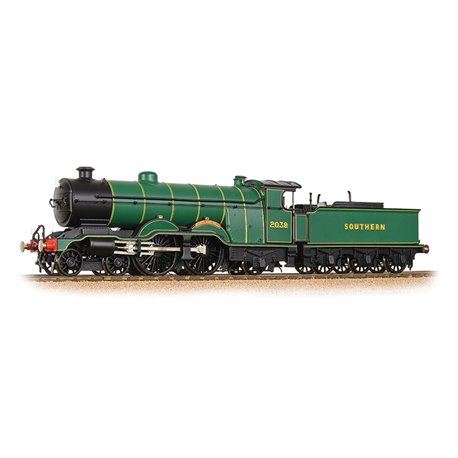No products
Product successfully added to your shopping cart
There are 0 items in your cart. There is 1 item in your cart.
LB&SCR H1 Atlantic 2038 'Portland Bill' SR Malachite Green
31-911
Bachmann
LB&SCR H1 Atlantic 2038 'Portland Bill' SR Malachite Green
- Bachmann Branchline OO Scale
- Era 3
- Pristine SR Malachite Green liveryAc
- essory Pack – including ‘Portland Bill’ etched nameplates
- NEM Coupling Pockets
- Tender Pickups
- Equipped with a 21 Pin DCC Decoder Socket – recommended Decoder 36-557
- Speaker Ready
- Length 260mm (over couplings)
This product is out of stock
More info
LB&SCR H1 Atlantic 2038 'Portland Bill' SR Malachite Green
This era 3 model incorporates a wealth of fine detailing, accurately capturing the features of the H1 Class and highlighted by its colourful livery. An accessory pack is supplied with the model which includes etched nameplates, vacuum pipes, Screw-link couplings, route indicator discs and cab doors. The model is also ready to accept a speaker and has a 21 Pin DCC Decoder socket for those wishing to equip their model for use on DCC.
MODEL FEATURES:
- Bachmann Branchline OO Scale
- Era 3
- Pristine SR Malachite Green liveryAc
- essory Pack – including ‘Portland Bill’ etched nameplates
- NEM Coupling Pockets
- Tender Pickups
- Equipped with a 21 Pin DCC Decoder Socket – recommended Decoder 36-557
- Speaker Ready
- Length 260mm (over couplings)
LB&SCR H1 HISTORY
When D. E. Marsh left the Great Northern Railway to take office with the London Brighton & South Coast Railway (LB&SCR), there was an urgent need for new larger passenger locomotives to work on the London-Brighton express route. Marsh obtained a set of drawings for H.A. Ivatt’s Atlantic from Doncaster and modified them before commissioning Kitson & Co. to build five H1 Class 4-4-2 Atlantic Locomotives. Built between 1905 and 1906 and delivered simply in grey primer, each locomotive was subject to a thousand-mile trial before they were painted in the LB&SCR's 'burnt umber' livery with gold lining and numbered 37 to 41.
Initially registered as a class B5, it wasn't until January 1907, sometime after the last of the five was received, that this classification was revised to H1. Marsh's modifications meant that the design differed from the better-known Ivatt Atlantic’s by having a 2-inch longer piston stroke and a higher working boiler pressure, raised from 175lb to 200lb per square inch. The resulting locomotives were a little livelier as they had extra torque, which was needed to combat steep climbs away from many stations on the LB&SCR network.
The only H1 Atlantic to carry a name during the LB&SCR era was No. 39 – from June 1913 to January 1926 it carried the name 'La France' as it was to be used to pull a train for the French President during his second official visit. From 1925 the H1 Class was gradually replaced on London-Brighton services, however, there was still plenty of work on other routes including boat-train duties connecting the Newhaven-Dieppe ferry. It was at this time that they were all given names highlighting geographical features from the south coast.
Between 1935 and 1937 the locomotives were altered to suit the composite loading gauge but with the onset of World War Two their work dried up as cross-channel ferry services were suspended. Some locomotives were put into store whilst others found work on other duties in Southern England. Two of the five were withdrawn in 1944 and the remaining three survived long enough to see service with BR, by July 1951 the H1 Atlantic’s had all been withdrawn from service after 46 years on the rails.








